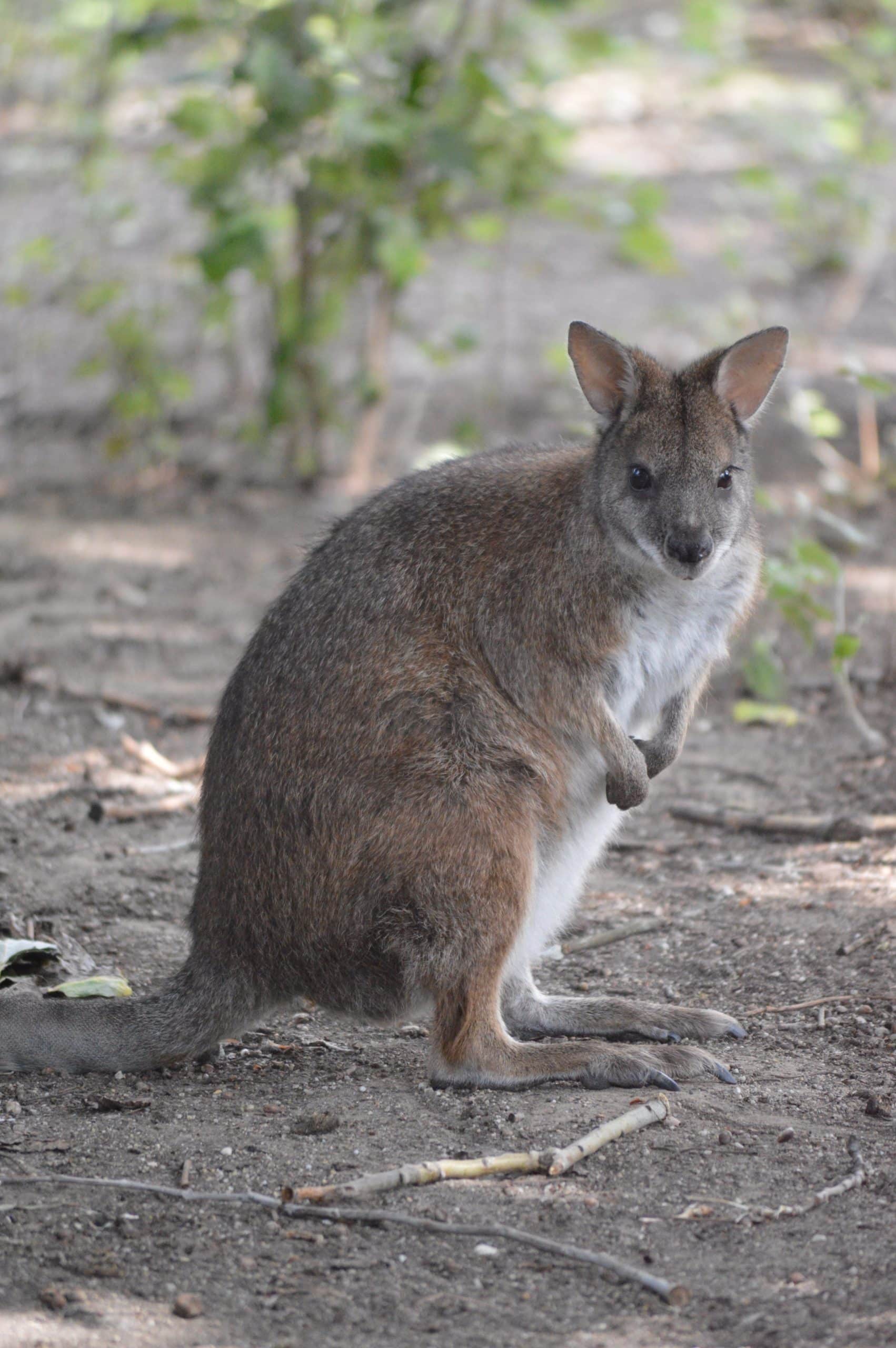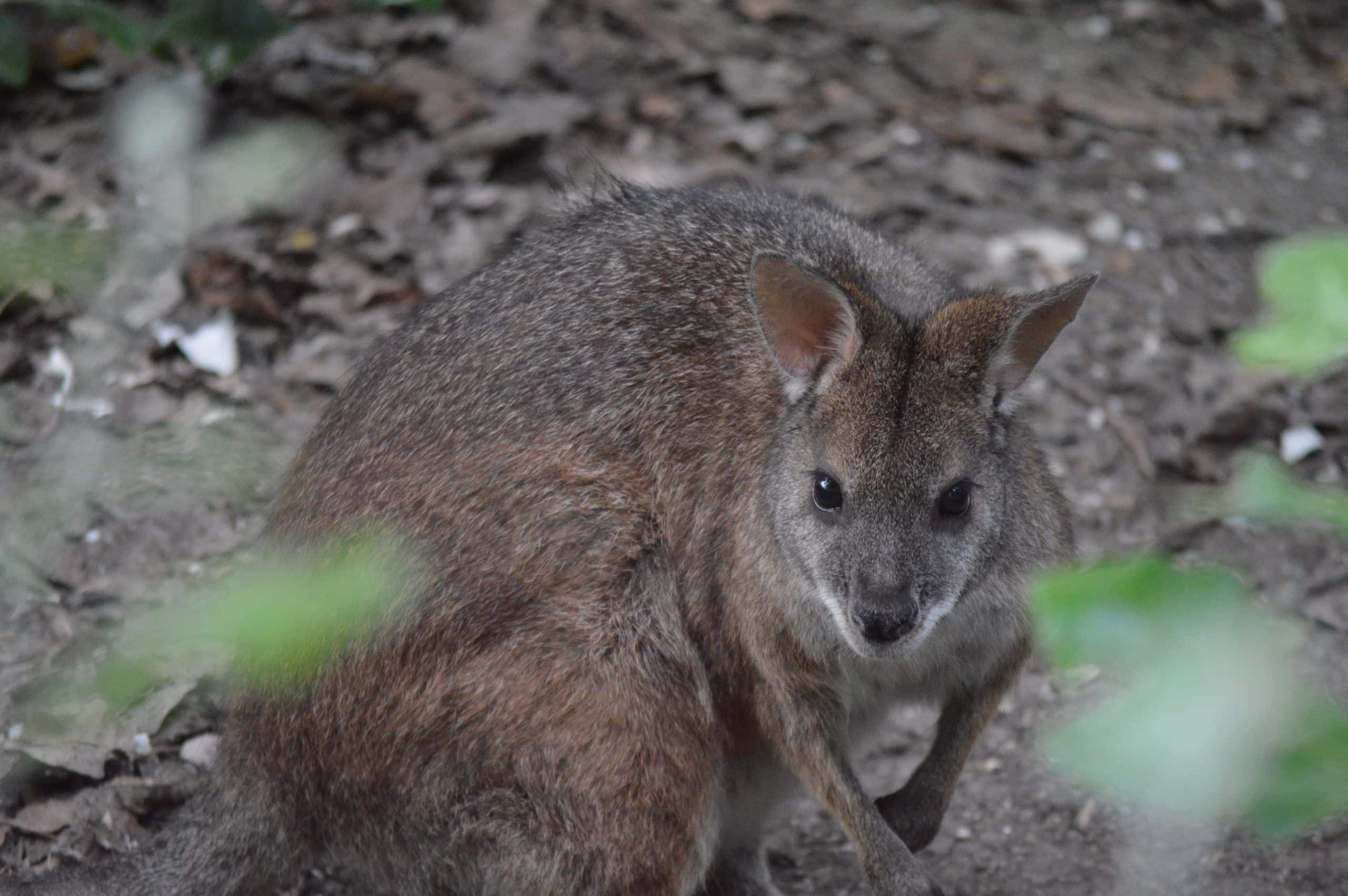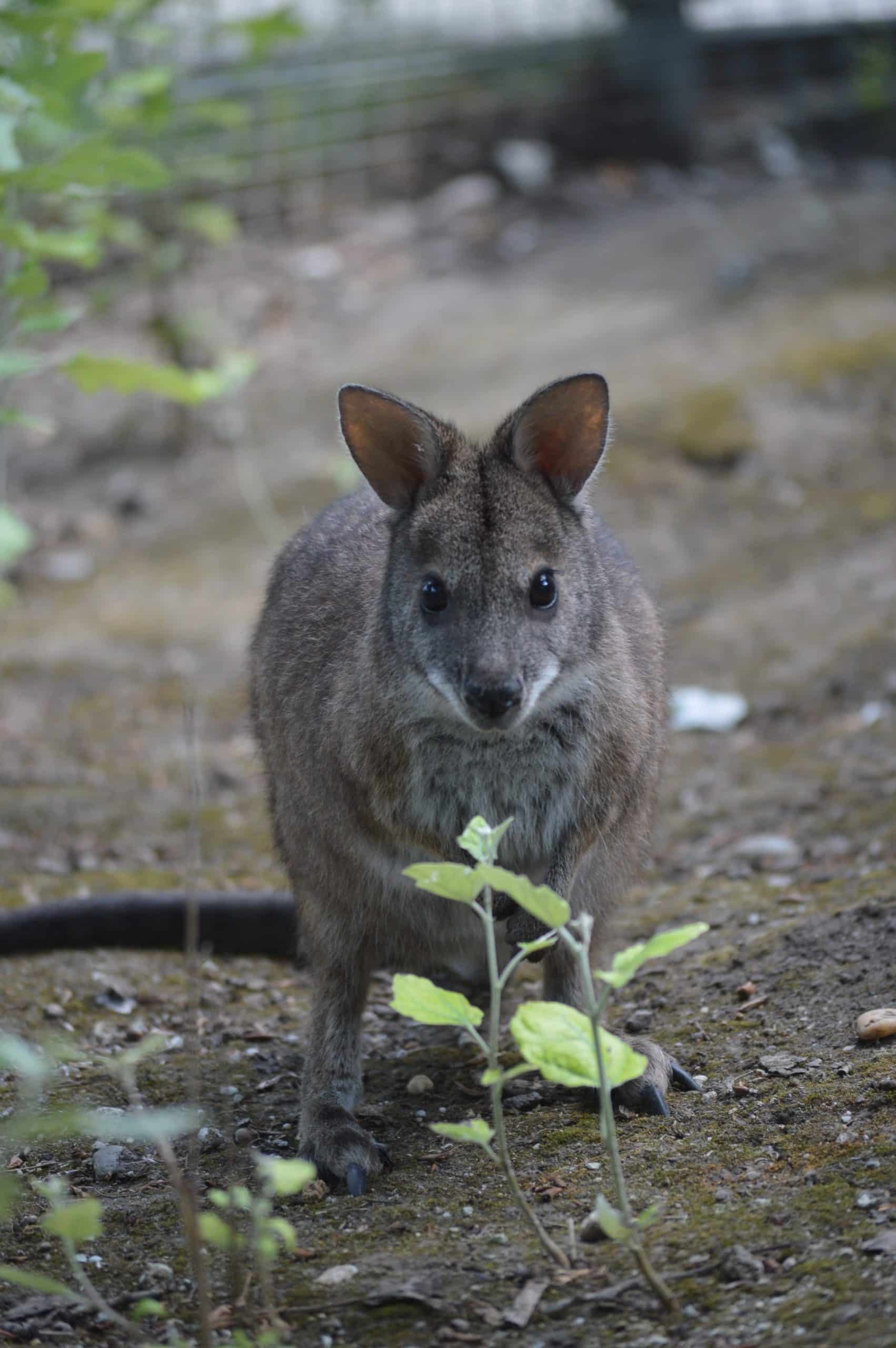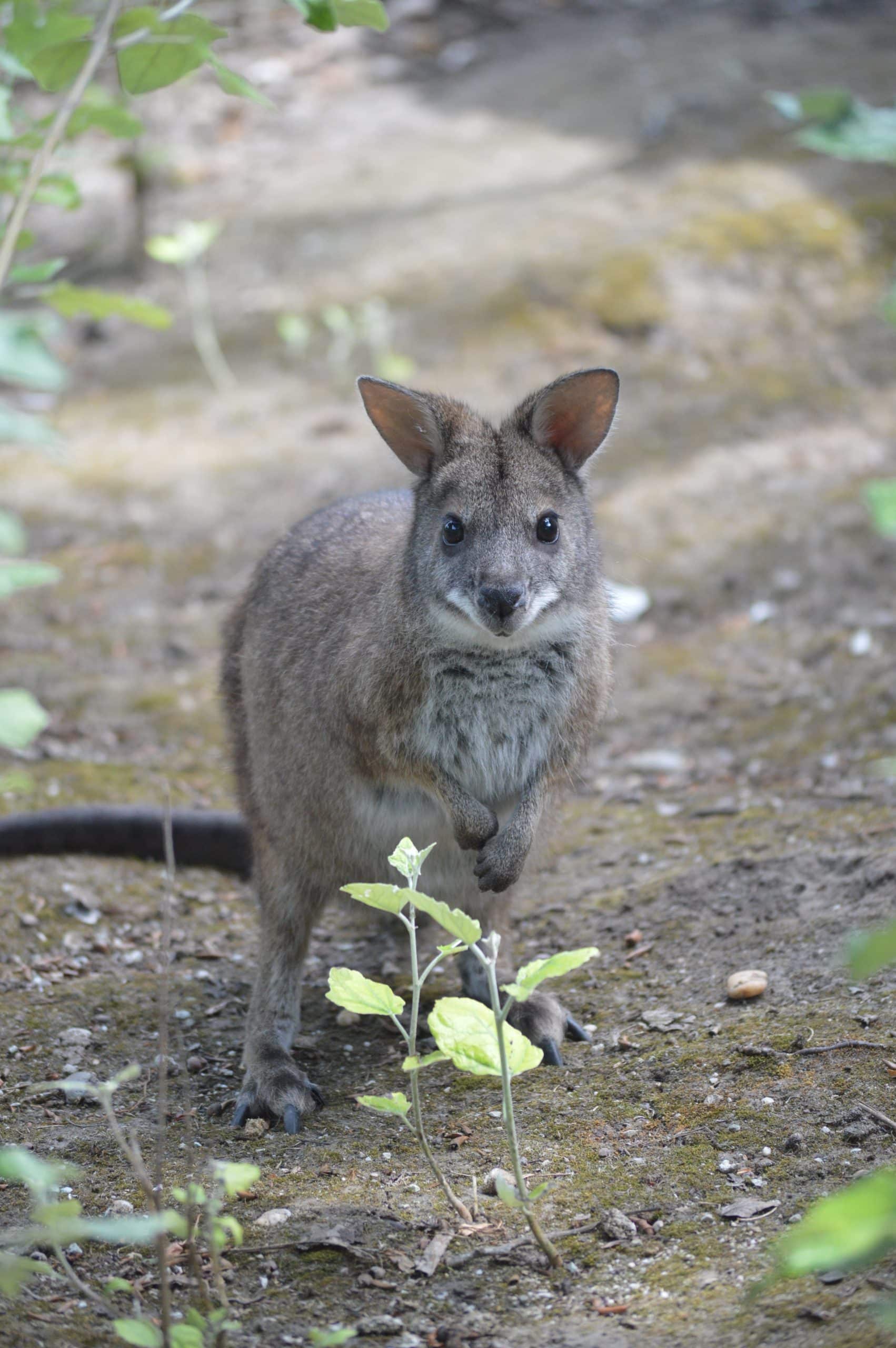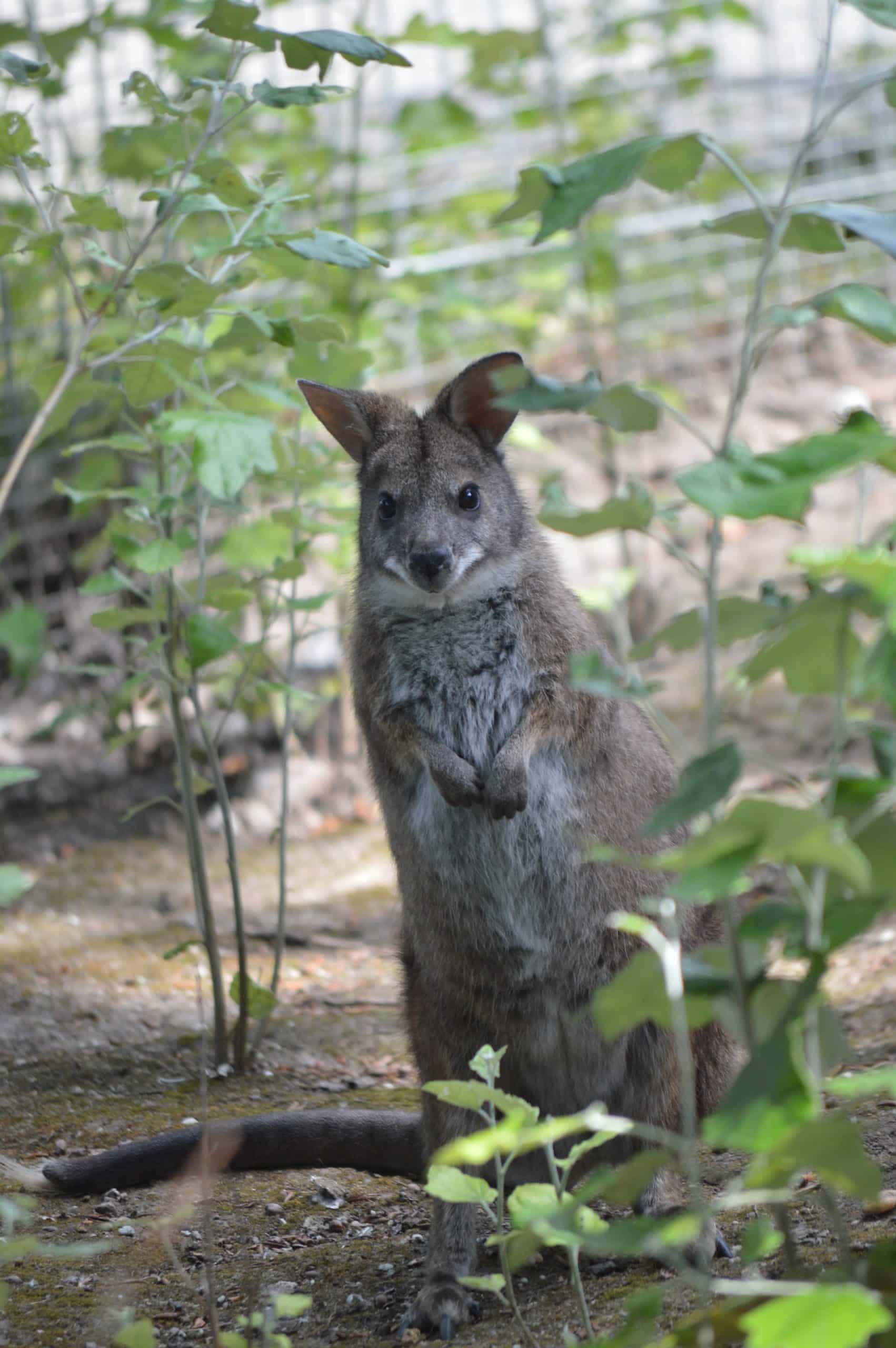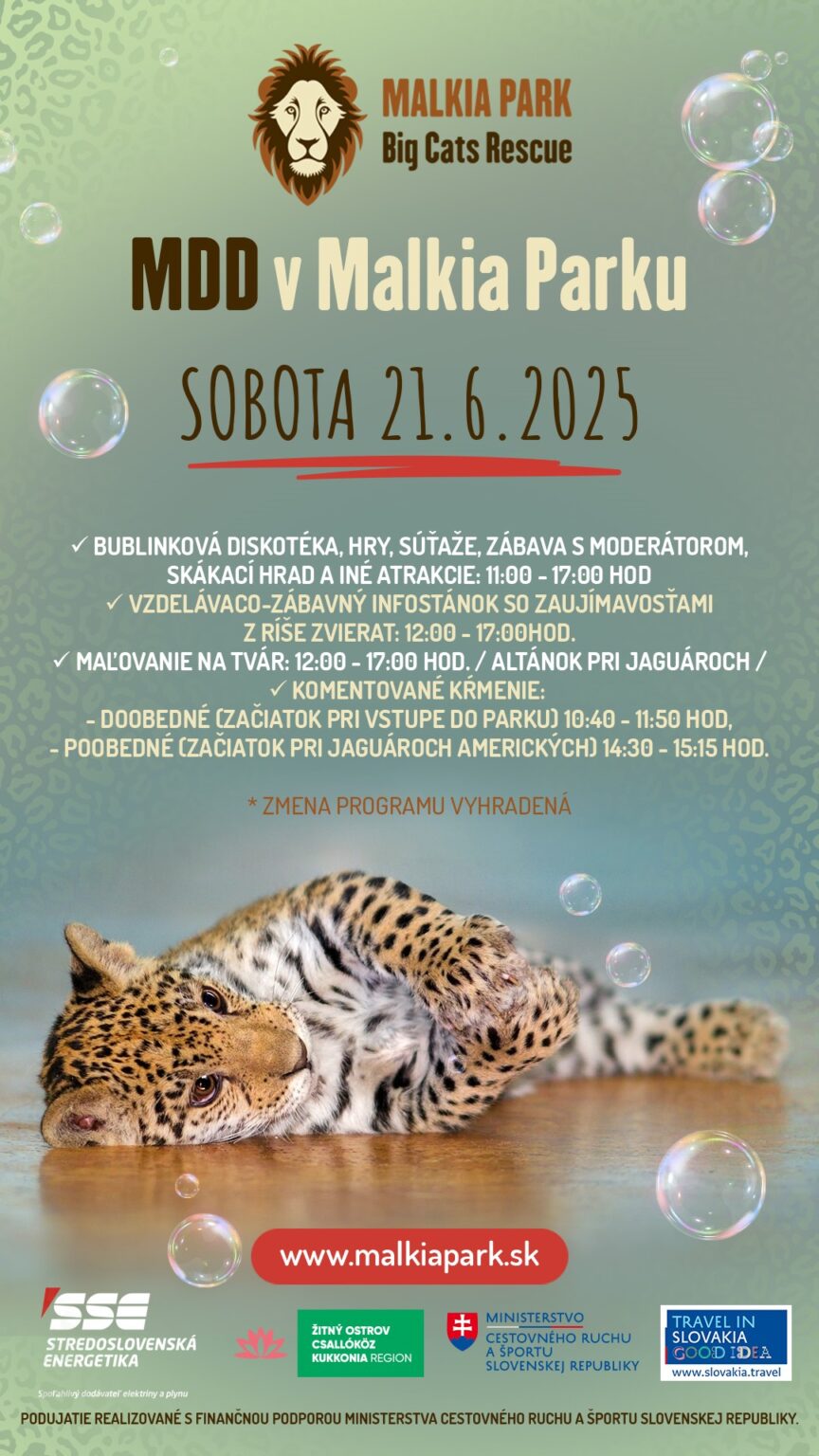The parma kangaroo is the smallest species of kangaroo from the genus Macropus. This shy animal is gray-brown in color with a white throat and a dark stripe, the so-called “eel waist”, in the middle of the front half of the back. It has a white stripe on its cheeks and upper lip, and a white throat and chest.
Primarily active mainly at night with peak activity before dawn, it spends the day resting in dense undergrowth and is rarely seen during the day.
The parma kangaroo lives mostly alone in the wild. The formation of dyads or triads is also recorded. A triad usually consists of one male and two females. Such behavior is typical for small species living in dense vegetation, whose food is scattered or it is necessary to move for it.
The female is monovular, meaning she produces 1 egg per estrous cycle. Parma kangaroo is polyestrous (estrus repeats regularly throughout the year). The cub remains in the pouch for 9 to 12 months. Under suitable conditions, the female after giving birth, on the 105th day, comes into estrus again. If mating is successful at this time, embryonic diapause occurs and the development of the new embryo is delayed. After the previous young leaves the sac, embryonic development resumes. Some females give birth as early as 6 to 11 days after the previous cubs leave the pouch. The mother can give birth again when the cub is out of the pouch, but not fully weaned.
The cub permanently leaves the pouch at the age of about 7 months. Complete weaning occurs at the age of 9 to 12 months. At this time, it can have up to 50% of the weight of an adult individual.
The parma kangaroo was for some time considered an extinct species in nature. Therefore, attempts have been made to re-breed wild populations of animals that were previously imported to New Zealand and from zoos. However, wild animals have been found again on the coast of New South Wales.
A baby is not born in a pouch. It is born as an undeveloped embryo and after birth climbs into the sac with the help of the mother.
There is no difference between a kangaroo and a kangaroo. The word kangaroo is officially used in Czech and Croatian, in Slovak it is only a colloquial designation.
In the Slovak language, the correct name of kangaroo (also used in other languages) is derived from the word “ganguuru” from the language of the original inhabitants, meaning a gray or large kangaroo.
